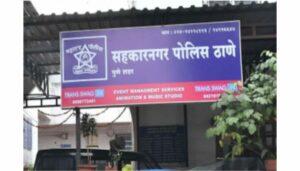Doctors advise: Smog Towers not a solution to Air Pollution, prescribe public health advisories on ‘bad air’ days

Pune, August 27, 2022: Given that winter onset is a few months away and issues pertaining to air pollution will resurface, medical health practitioners have said that smog towers are of no use at all. Instead governments need to invest in real solutions such as better air quality monitoring and prompt public health advisories for poor air days, doctors said.
Speaking at the India Clean Air Summit 2022 (ICAS 2022), a 4-day event on the theme of ‘Looking at Air Pollution through the Climate Lens’ organised by the Centre for Study of Science, Technology and Policy (CSTEP), Dr Harshal Salve, Additional Professor, All India Institute of Medical Sciences (AIIMS) explained how smog towers have significant limitations. The primary one being that they are expensive and fail to have any real impact on air pollution exposure to the citizens.
“I don’t think smog towers will be useful in addressing the air pollution problem at its core. What we really need to address is the source of emission rather than trying to capture emissions in the air. This is applicable with smog towers or even air purifiers. We really have to see its cost effectiveness in terms of how much we are investing and how much we are gaining out of it. This intervention is ranked at the lower level against others,” said Dr Salve.
Smog towers are structures made to function as massive air cleaners. They typically have numerous layers of air filters installed, which remove pollutants from the air as it travels through them. Polluted air is drawn in at a height of 24 m and filtered air is released at the base of the tower, at a height of roughly 10 m above the ground, using a ‘downdraft air cleaning system’. They may offer short-term respite from air pollution in a local area, but Dr Salve terms them as expensive band-aid solutions without any long-term scientific support.
Currently there are two big smog towers in Delhi with multiple smaller ones as well, apart from this smog towers have also made their way to Chandigarh, Noida, Bengaluru and many other cities too are in talks to install them.
“As compared, issuing health advisories is of prime importance as communicating to citizens through health and scientific applications. If we invest in such interventions it will give us better outcomes to the investment. Communication is key. If demands are public driven then there are automatically more outcomes,” Dr Salve said, adding that we must put emphasis on communicating to the public through social media, apps, newspapers etc. with respect to monitoring of the day to day air quality and what should be done at what level. “People need to clearly understand the risks of inhaling polluted air – ensuring we are able to reach the masses with the message is critical,” he said.
Dr Salve was speaking at ICAS 2022’s panel discussion – The Number Game – Putting a Number on Our Losses: Exploring the economic impact of air pollution on the society, environment, and occupational health – along with other medical practitioners. On day 1 of ICAS 2022, Shri K Sudhakar, Minister of Health and Family Welfare and Medical Education, Government of Karnataka, called for a multi-disciplinary approach to addressing rising pollution levels highlighting that air pollution was leading to ‘silent deaths’ across the country.
Dr Salve put this in perspective based on a study that generated local evidence at the community linking mortality to PM2.5 exposure. “Global scientific assessments clearly establish the relationship between all cause mortality as well as cardio respiratory mortality associated with air pollution. I don’t think there is any doubt associated with this relationship. We really need to put our emphasis more on the disease specific attributes related to air pollution as well as what are the solutions if we really want to move forward,” he said.
Dr. Rahul Patil, a cardiologist with the Sri Jayadeva Institute of Cardiovascular Sciences and Research, was one of the medical professionals on this health panel at ICAS 2022 who brought attention to a study his institution conducted over five years with more than 5000 patients that conclusively linked air pollution to heart disease.
The experiment used PM2.5-sized gold nanoparticles, and it was discovered that this particular size particle is capable of passing through natural human filters. In other words, when you breathe it in through your upper respiratory system, it enters your lower respiratory system, including your lungs.
“Additionally, the capillary membrane in the lungs serves as an air filter, removing the majority of contaminants. But after that, PM2.5 might pass through the capillary membrane and subsequently enter the blood. Then it is discovered that it has a propensity to travel to and settle in the coronary arteries (arteries supplying blood to the heart). The body reacts by increasing cholesterol deposition in the same place when these foreign particles settle in a specific blood pipe. Blockage develops over time, eventually leading to heart disease. It has been demonstrated experimentally,” explained Dr Patil, adding that similar global epidemiological studies, including those by the American Heart Association that developed recommendations have shown that there is a direct correlation between air pollution and heart ailments.
Dr Pratima Singh, Head of Centre for Air Pollution Studies (CAPS) at CSTEP said that given that there is already awareness about air quality among people especially in urban areas, the urban local bodies should begin issuing health warnings. “Bihar recently announced that it plans to provide people with air quality warnings three days in advance- a model that all other states and many cities in India should replicate. These warnings when properly communicated using multiple broadcast mediums will ensure citizens can take appropriate steps to protect themselves. Such solutions are much needed than putting up smog towers whose effectiveness has yet not been established,” she said
In its 4th edition, ICAS brought together not only doctors but environmental activists, policymakers, industrialists, and students for a range of discussions that look at linkages between Air Pollution and Climate Change and how exploring these dual issues together can reveal important insights for policies.








